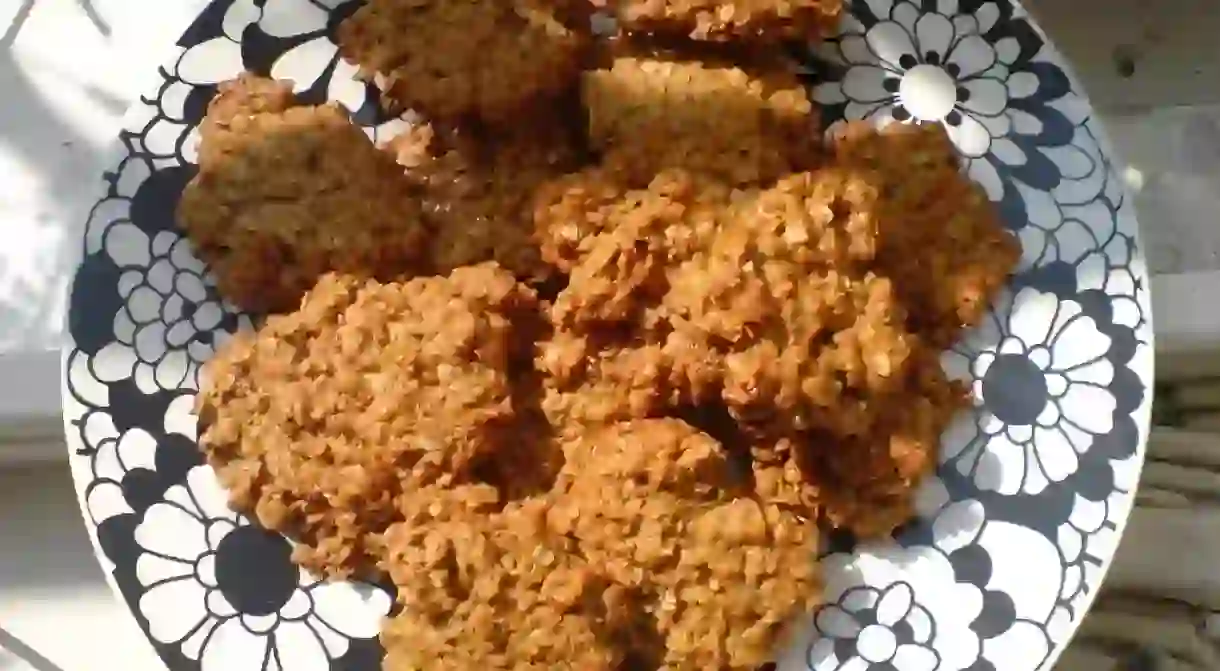Anzac Biscuits, Australia & New Zealand's Unifying Treat

Unlike the Pavlova, there has never been any argument over the origin of Anzac biscuits; after all, the ‘source of the recipe isn’t important, it’s the spirit and sacrifice of soldiers that inspired the name’. Becoming a popular, traditional biscuit for both Australia and New Zealand, Anzac biscuits are eaten year-round.
Anzac Day
Australia’s national day of remembrance falls on the anniversary of the Australian and New Zealand Army Corps (ANZAC) landing at Gallipoli, Turkey in 1915. Originally honouring those who died during the conflict of the Gallipoli Campaign, Anzac Day now commemorates and honours all Australian and New Zealand servicemen and women who served and died in all conflicts, wars and peacekeeping operations. Although the landing at Gallipoli led to a harrowing battle that led to a great loss of life, the battle helped both countries (Australia and New Zealand) form their individual and unique national identities full of ‘endurance, courage, ingenuity and good humour’.

Traditional Anzac Biscuits
One of the simplest, yet delicious, biscuits in the world consists of very few ingredients – golden syrup, flour, oats, sugar, desiccated coconut, butter, and bicarbonate of soda. However, like most historical recipes, it is hard to locate the original recipe of this national biscuit. Although the first recorded recipe of an Anzac biscuit is said to have appeared in The War Chest Cookery Book (1917) published in Sydney, this was a recipe for a cake, not a biscuit. Very similar recipes of this biscuit existed during the early 1900s in cookbooks, but under other names such as ‘Rolled Oat Biscuit’ and ‘Soldier’s Biscuits’. Some people have thought that the original recipe for these biscuits is based on Scottish biscuits as the use of oats in a variety of recipes is used extensively in Scotland due to their nutritional value.
These biscuits range from mega-crisp to super chewy; although no matter how you choose to create them, the ‘smoky warmth of golden syrup’ that seeps through the coconut and oats within the biscuit makes it delicious to eat on its own or by dunking into your drink.

Ties To The War
During the war, these biscuits were shipped to the soldiers as they are an eggless biscuit with ingredients that won’t spoil during the long commute. Due to the scarce amount of eggs available during the war, these biscuits were perfect for a meal and were often eaten as a substitute for bread. In the beginning, before shipping the biscuits to the soldiers, the biscuits were sold at fetes and other events to raise money for the war effort. This combined connection between the biscuits and the war resulted in the biscuits being named Anzac biscuits by the 1920s, although they were sometimes called Anzac crisps or Anzac crispies back then.
Today, Anzac biscuits are available year-round at supermarkets, cafés and fetes across the two nations, being strongly associated with the national spirit of the countries.

Anzac Biscuits Are Protected
The term ‘Anzac’ is protected under Australian law, prohibiting the term to be used without permission from the Minister for Veteran’s Affairs in Australia, with similar restrictions in New Zealand. However, there is a general exemption that has been granted when it comes to the Anzac biscuits – they must ‘remain true to the original recipe’, and they ‘must be referred to and sold as Anzac biscuits’, never cookies.














